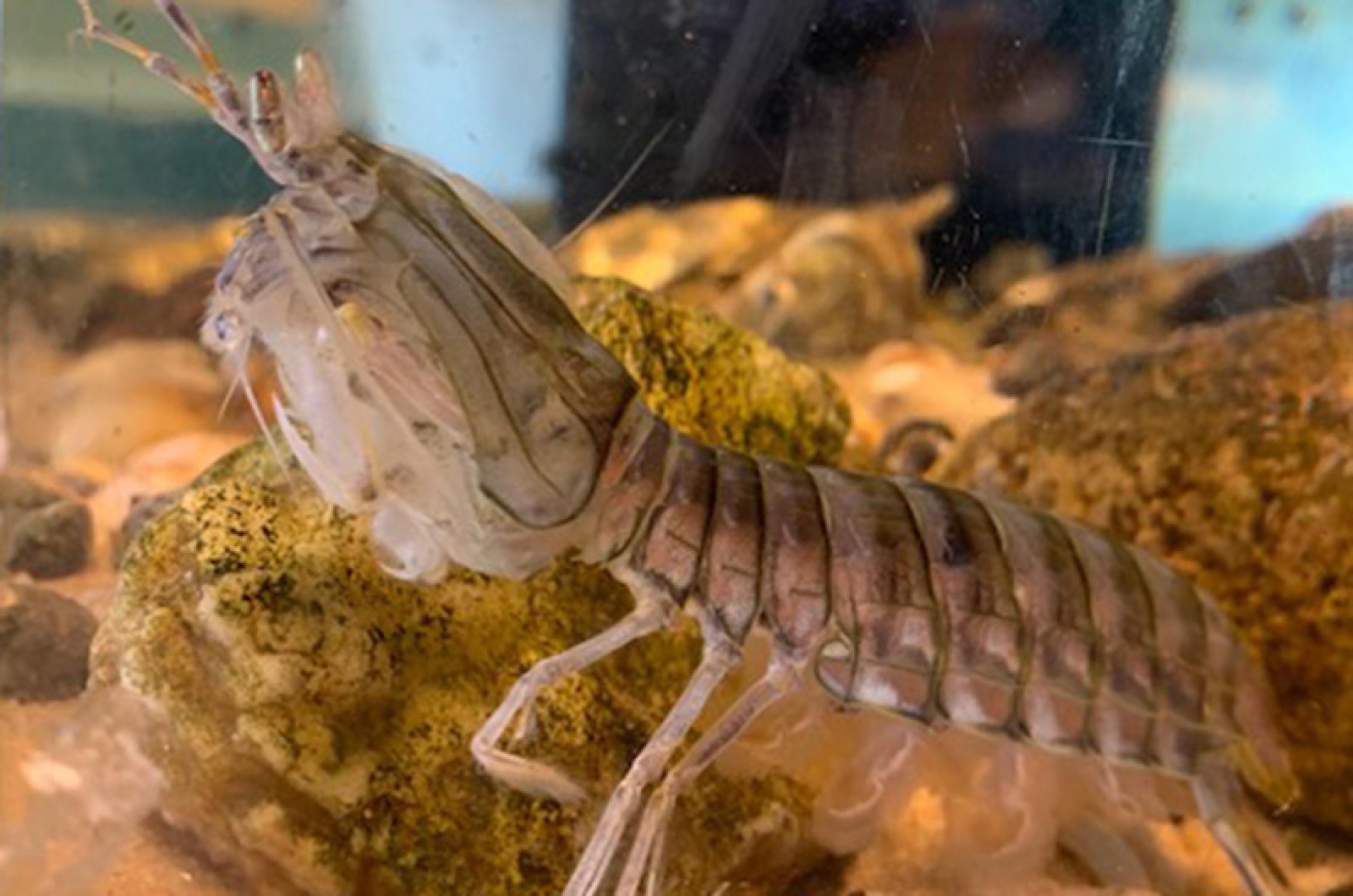Mantis shrimp don’t need anyone in their corner. They come out swinging and leave all prey down for the count.
These marine animals are quite elusive, preferring to spend their time in their u-shaped burrows in soft sediments below the ocean and pond floors. Two live specimens of a local species, the West Atlantic mantis shrimp (Squilla empusa), were found in the Lagoon last week by a local scalloper.
Neither true shrimp nor praying mantises, this special creature has its own category. Known as stomatopods, mantis shrimps have their own scientific order, though they are crustaceans related to crabs and lobsters. Consider them ancients, as they have been around for a very long time, predating even dinosaurs by 170 million years. Early mantis shrimp evolved 400 million years ago.
Unfamiliar to many, this crustacean lives in our local waters, though is not seen often enough to be recognizable to most beachgoers. Mantis shrimp resemble giant, odd-looking translucent shrimp or petite, small-clawed lobsters, and reach a size of up to 10 inches. Their distinctive look comes with distinctive features.
Most obvious (and deadly) is their second pair of appendages that rest in a position resembling a praying stance. These modified claws are killers. They are the mantis shrimps’ number one weapon for slaughtering their prey. Mantis shrimps use their claws like a fighter — their one-two punch is deadly and impressive in its speed and power.
Two types of claws (spear and club) can strike with almost unimaginable force, either smashing or slashing prey. For mantis shrimp’s victims, it is a total knockout, as they are immediately down and out for good.
Handle with care (if at all) is the advice to take when finding these creatures. Mantis shrimp are one of the strongest, fastest and most powerful animals on the planet. The mantises’ blows are swift, with a strike velocity of eight milliseconds, 50 times fasters than a human blink of an eye, and are clocked in at 50 miles per hour, comparable to a gunshot from a 22-caliber rifle. If a person had this power, she could break steel with her punch.
And as we know, for every action there is a reaction, and the speed at which mantises’ limbs move causes a phenomenon known as cavitation or supercavitation. Cavitation bubbles are formed from the rapid motion of their claws, and when the bubbles collapse their demise produces undersea shockwaves that are strong enough to maim or kill prey even if the mantis missed a direct hit on its victim. The after-effects of the popped bubbles include heat and even light, called sonoluminescence.
It is not surprising that these creative killers have been called “one of the most violent animals on earth.” Their nicknames include killer shrimp, finger poppers, thumb busters, sea scorpions and thumb splitters, alluding to the damage they do to humans and others that come into contact with them. Even aquarists eschew placing them in their tanks due to their killer instincts and surprising ability to break glass tanks.
The presence of mantis shrimp will always produce a quick knockout to animals that get in their way or appeal as a meal. It needs only one punch and its victims won’t have a chance. For prey, there is no being saved by the bell.
Suzan Bellincampi is director of the Felix Neck Wildlife Sanctuary in Edgartown, and author of Martha’s Vineyard: A Field Guide to Island Nature and The Nature of Martha’s Vineyard.




Comments
Comment policy »